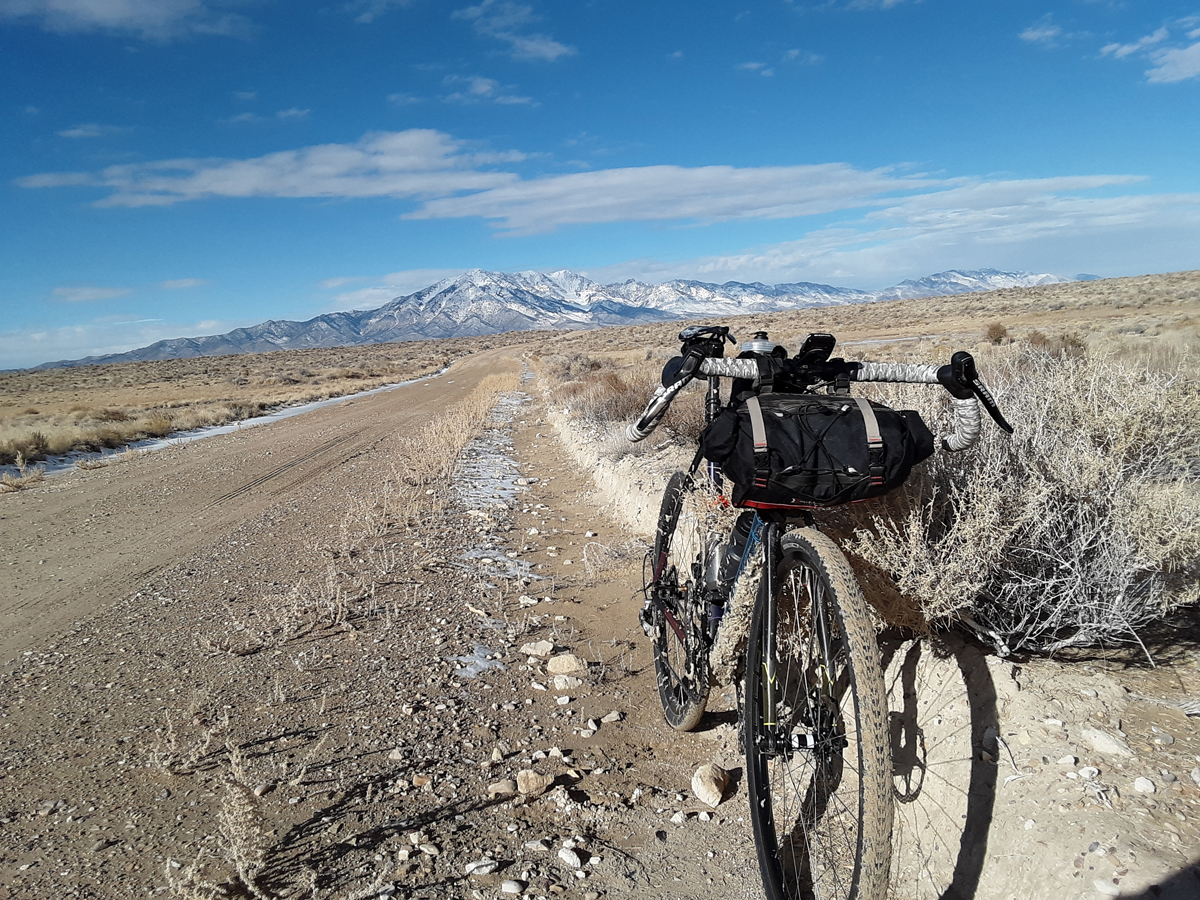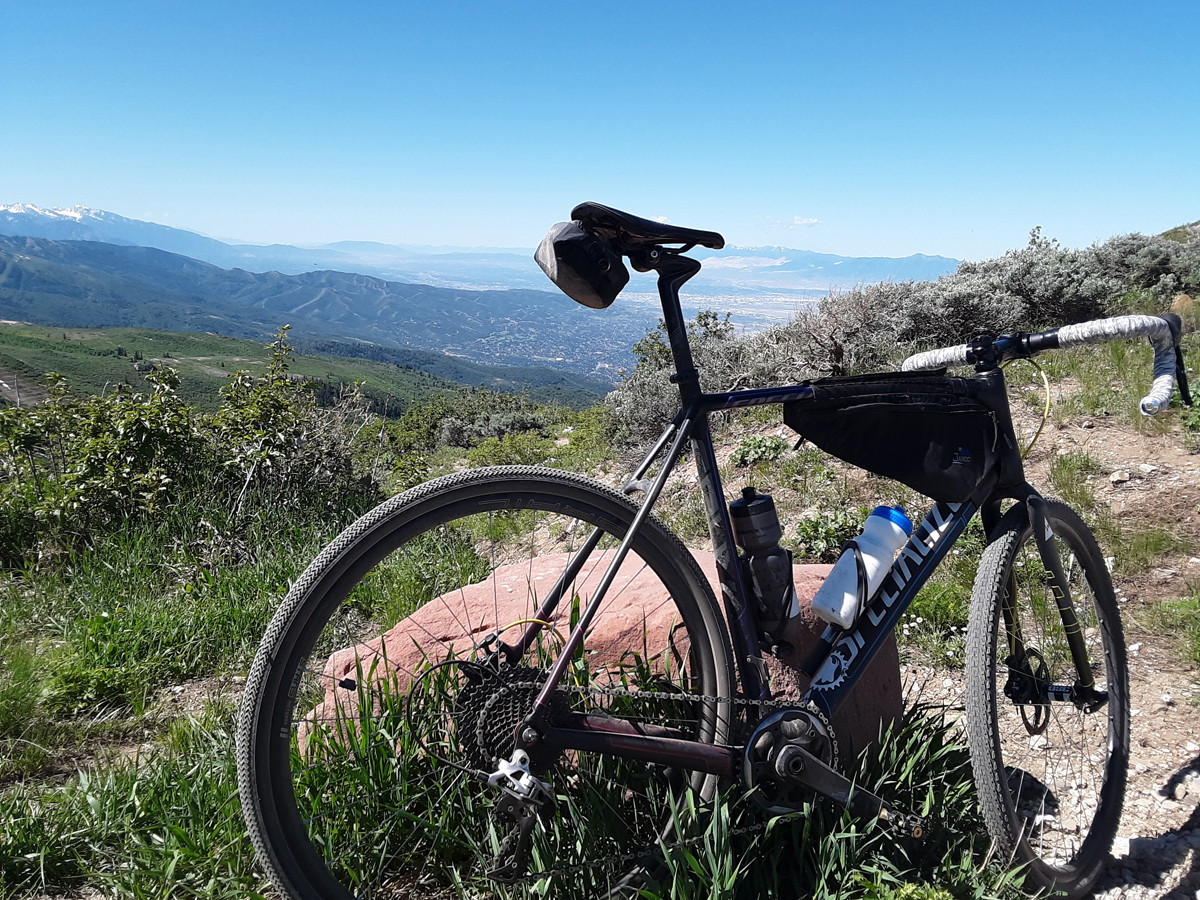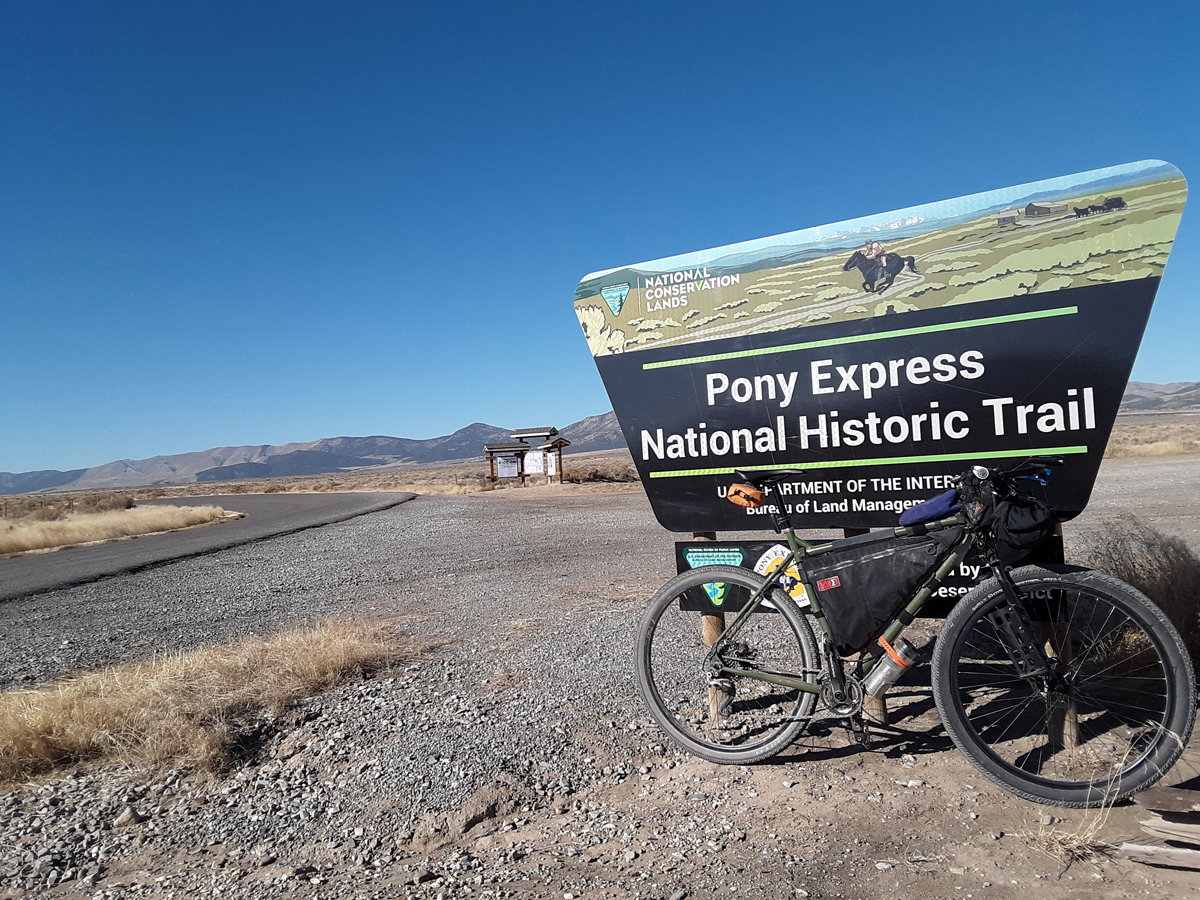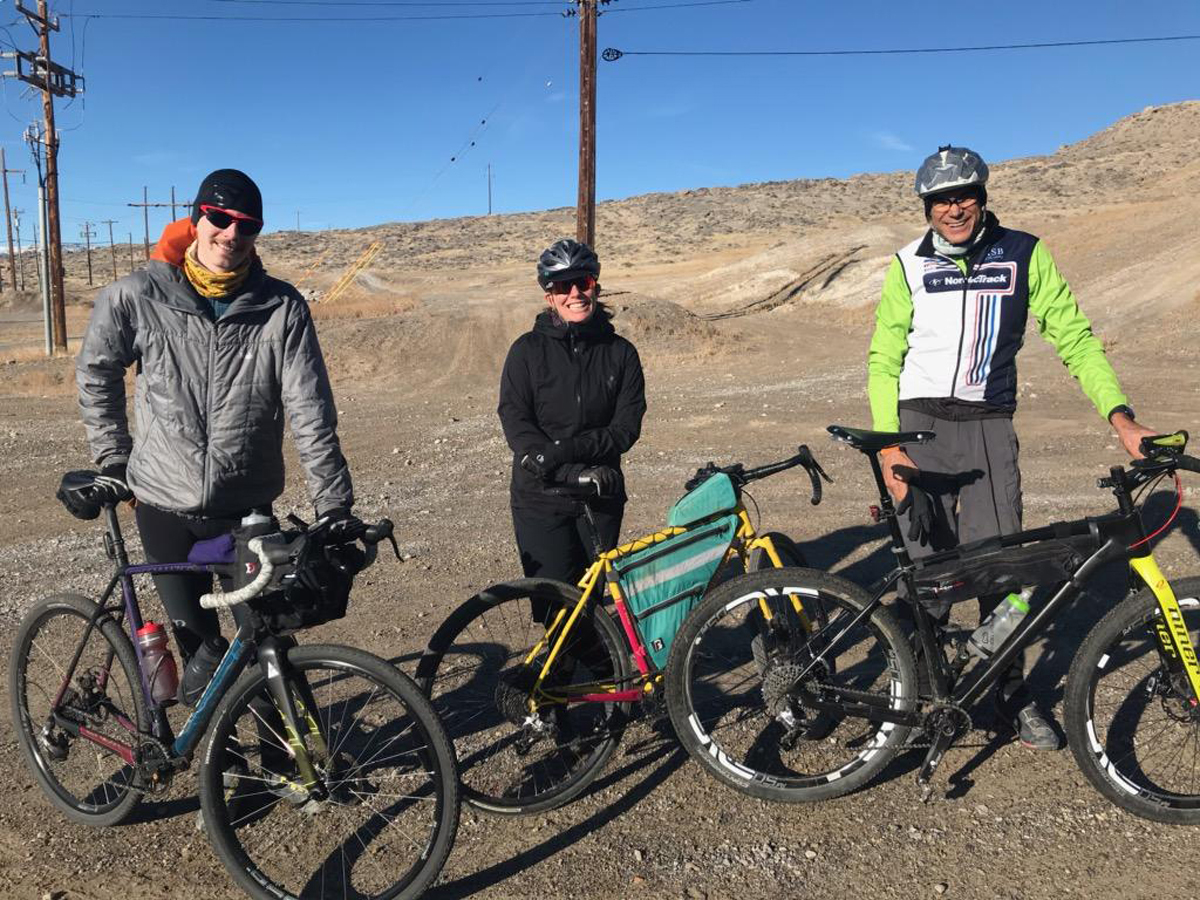A Gravel Bike Buyer’s Guide
By Bobby Kennedy — If you’re reading this, it’s because you live in the West and can’t figure out what the fuss is about gravel, or you’re living in the West and you’re super-excited about gravel but want some pointers on how to do it right. Cool. Hi! How are the kids/pets/plants/cobwebs where your family portraits once were?

What is Gravel?
Gravel means one thing east of the Rockies and a whole ‘nother thing out here. Why? Because of land use, population density, the rectilinear survey of the United States, and geology.
It all boils down to this: we don’t really have gravel roads out here. Sure, sometimes a fire road gets a new coat of brand-new rocks, but what we have in the West is dirt. Not the groomed dirt of a bike park or the famously smooth dirt strada of Colorado but dirt as in whatever the road was carved out of.
Down by Veyo, Utah, that’s fine volcanic sand. In the West Desert of Utah, it means a gnarly mix of loose conglomerate and sand. It’s all sand, basically, in good time.
What that means is that riding gravel here is different than everywhere else, and what a lot of people say about gravel bikes makes little to no sense in the Intermountain West. I have worked as a retailer for years now and have started a couple of my own gravel races, the Salty Lizard 100 (May 15-16) and the Stupid Pony (Oct. 2-3) [See the calendar for details]. I have dedicated my life to trying to make up for my utter lack of descending skills by being fast on dirt roads and I am here to help.
What’s a Gravel Bike?
Gravel bikes are basically mountain bikes from the 1980s made to fit larger-diameter wheels and drop bars. If you encountered me in a local shop and asked me why I would recommend getting a gravel-specific bike, I would tell you that gravel bikes are
-
- faster than mountain bikes, so they’re good for the distances that you’ll encounter during many organized rides, and
- able to fit mountain-bikeish-sized tires, making them slower but more comfortable on semi- to full-on-crazy terrain than road bikes.
Gravel bikes also tend to put the front wheel farther out in front than cyclocross bikes and have longer wheelbases (the length of a horizontal line going through each wheel’s axle) so they’re more stable at speed and more comfortable over rough stuff. Gravel bikes won’t corner as quickly as a CX bike, but that’s ok because there generally aren’t any off-camber hairpins on dirt roads.
Wheel Size and Carrying Water
The biggest things to keep in mind when considering a bike for Western gravel are:
-
- how much water can the bike carry and,
- how big of a tire can you fit in it?
Since we Westerners tend to ride more fire roads, singletrack, 4×4 double-track, and moto trails, tire clearance is a big thing. If you’re going to just ride on the road and hit up some of the smoother events like Rebecca’s Private Idaho, the Crusher in the Tushar, or the Volcano Fire Road 120, then clearance that tops out allowing a 700c x 40mm wide tire will do you just fine. If you plan on riding rougher roads or longer events like the Wild Horse or the Salty Lizard 100, then go as big as you can. Big tires float better over pointy things and sand. At RPI or the Crusher, they’ll just weigh you down.

With regards to carrying water, it’s a similar issue. Where are you riding? If you’re just tooling around on the roads with an event ride or two thrown in, then you don’t need a bunch of extra mounts. They add weight and you don’t need to carry a third bottle of water when you’re going to be see convenience stores and/or volunteer-staffed aid stations on every ride. Two bottles will get you pretty much everywhere (except when it’s hot, I guess).
If you’re planning on doing more remote rides or bikepacking, then get a bike that looks like a stunted porcupine from all the extra mounts. When you play around in the desert, you need to bring a lot of water. The mountains along the Wasatch Line will have springs, usually, whereas if you’re going to be in the surrounding desert, you might be utterly on your own. So, if your event is the Stupid Pony Ride or you’re one of the insane people circumnavigating the Great Salt Lake by bicycle, then get one that can haul liquids in quantity.
Luckily, these two requirements overlap both in terms of where you ride and what the bikes come equipped with. Bikes that can clear big tires like the Salsa Cutthroat or Fargo, Rodeo Labs Flaanimal, or the Bearclaw Beaux Jaxon, all have lots of places to carry water.

Conversely, while you can strap bikepacking bags to a 3T Exploro or Specialized Diverge, they each only come with three dedicated mounts. They are much faster than any of the big tire bikes, but they also don’t clear the same-sized rubber on a 29er (700c) wheelset.
“But Bobby, what about 650b?”
“What about it?”
“…”
“…”
“…”
Fine. Smaller-sized wheels have been used forever and, as folks in the industry have a lot of practice pointing out by now, the outside diameter of a large 650b tire is the same as a smaller-width 700c tire. Generally, it’s about the same between a 650b x 47mm and a 700c x 30mm. Lots of manufacturers will list how big of a tire in each size their bike can handle.
Why look for 650b specifically? Well, because the outer diameter is the same, then (theoretically) the ability to roll over obstacles and hold speed should be about the same between the two tires but with a bonus for the 650b rider, since the tire would be bigger and more comfortable. That can matter a lot if your bike is limited to a 700c x 37mm tire but can accept a far plumper and comfier 650b x 47mm tire. That can mean the difference between starting the Wild Horse and finishing it. So, what’s the downside? Well, that similarity between tire diameters is unweighted, so you actually don’t have the same outer diameter once you start riding the bike, which most of us do at some point.
Many gravel bikes now can accept 700c tires that have a similar width to typical 650b sizes – 42mm or wider – so the plusher tire argument becomes somewhat moot, since the 42mm tire on a 700c rim will have a better rollover clearance (obstacles hit lower on the tire) than a 42mm tire on a 650b rim.
Also, the smaller diameter of 650b tires means less ground clearance for your cranks and pedals, so you’ll need to be sure that you watch your feet when things get pointy. This was an issue with mountain bikes a few years ago. It should be telling how few bikes come with 27.5 x 2.8” tires now. Feel free to rattle off a few in the comments, but in your heart of hearts, you know I’m right.
MTB, CX, or Gravel Bike?
Speaking of mountain bikes, do you actually, really, truly need a gravel bike? No.
Gravel bikes split the differences between mountain bikes, cyclocross bikes, and road bikes, and, depending on where you’re riding, the first two will usually do just fine and the third might be survivable (unless you’re riding Jeremy Ranch Road in Park City, Utah, in which case send it). In fact, XC and CX bikes were the original gravel bikes. The benefit of a bike specifically designed for gravel is a bit more speed than a mountain bike and a bit more comfort and control than a CX bike. If you don’t mind sacrificing a little comfort on your CX bike, or if you feel super-fast on your XC bike, then you can get away without a dedicated gravel bike.

One of the great things about gravel events is that you can run what you brung and no one will bat an eye. If you’re out in the middle of nowhere, sometimes it’s just more comfortable to be sitting on a full-squish dual-suspension mountain bike despite the slower pace. I’ve ridden the Salty Lizard 100 course on both my full suspension XC bike and a CX bike and they were both a ton of fun. I have also had people swear to me that they’d never set foot on the course without an MTB below them. I still have yet to ride my own gravel course on a real gravel bike. Go figure.
Do You Need a Gravel Bike?
I hope that, if nothing else, you’re closer to your public transit stop, or a bit closer to the front of whatever line you’re standing in. I really hope is you’re reading this in a bike shop with a gal/guy standing next to you waiting to offer you advice that you’re currently ignoring (both the salesperson and the advice) in favor of reading this article.
Gravel bikes are fun, they can get you way out in the beautiful open ranges of mountain and desert and valleys here in Utah and all over the West, but buying one or, heck, even just deciding that you “need” one doesn’t have to be stressful. Just put your butt on a few and, after deciding what size tires you want to be able to run, choose the one that fits your build and your budget best, and looks cool to boot.












